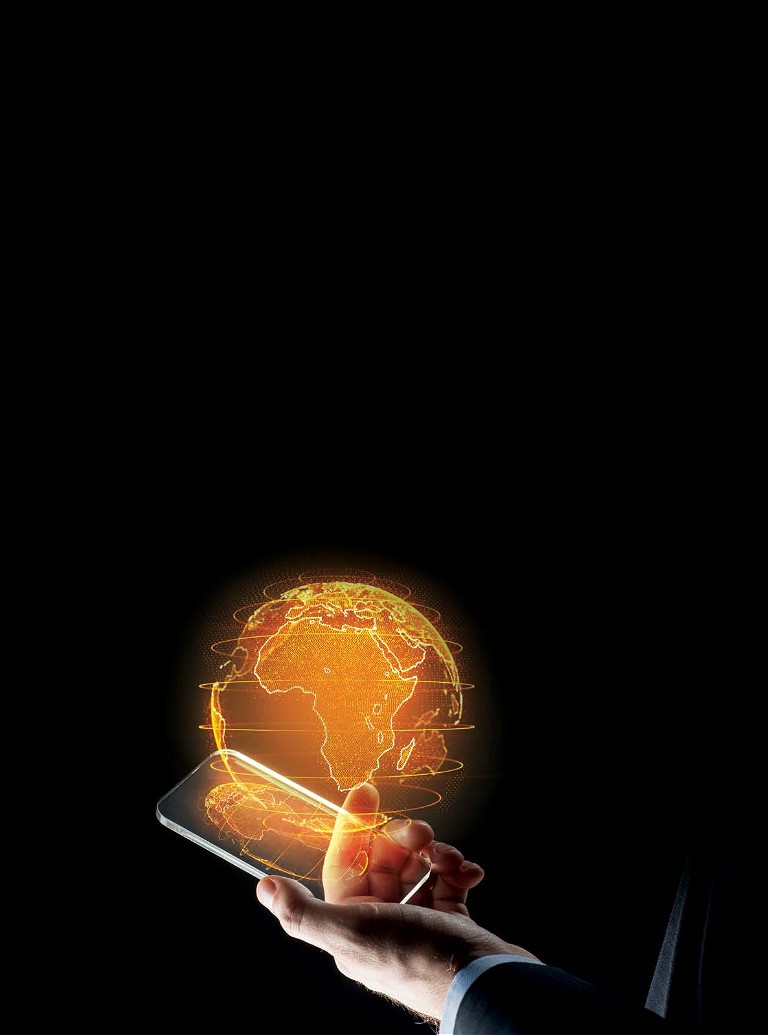CONNECTING THE UNCONNECTED IN AFRICA

Nthabeleng Mokitimi-Dlamini
Field Marketing Manager for Sub-
Saharan Africa at Nokia
Africa is the second largest continent in size and population; however, lags behind in terms of internet penetration. According to the ITU measuring digital development publication (2021), 23 percent of the African population does not have access to a mobile-broadband network. Other reports such as the Statista (2020) and Internet World Stats (2021) posit the continent’s internet penetration rate to be at around 40 percent in contrast to a global average exceeding 60 percent. In a world that is increasingly reliant on the internet, the unconnected in Africa are unable to reap its transformational benefits for education, health and financial services, amongst others.
Whilst a number of projects have been implemented to bridge the digital divide, approaches that provide connectivity to sparsely populated, rural and remote areas, as well as low-income communities, remains a challenge. Therefore, innovative approaches on how connectivity can be provided to these areas at affordable costs becomes paramount. Further -- with more people working from home, students having remote learning and e-commerce taking centre stage -- accessible, faster, reliable, and affordable internet has become a basic necessity.
The Covid-19 pandemic undoubtedly illuminated technology’s critical role in how we work, learn and live. It exposed the digital divide, brought to the fore the stark realities of Africa’s low internet penetration, and warranted us to expedite the pace of digital transformation.

Nokia bridging the digital divide
It therefore came as no surprise that in countries such as South Africa, the communications regulator ICASA moved with speed to issue temporary spectrum to unlock connectivity for all during the Covid-19 disaster period. This kind of approach would enable operators to meet the surge in internet demand and alleviate network challenges, ease congestion, deliver faster connectivity and ensure good quality of service for consumers.
In this context, Nokia has been assisting operators across Africa to deliver faster networks. In South Africa, the launch of Nokia-enabled Vodacom’s 5G launch was timely and is helping the service provider to better manage the increase in data consumption. In Kenya, Nokia powered Safaricom to launch East Africa’s first commercial 5G services. Nokia leveraged its AirScale radio platform to enable ultra-low latency, huge connectivity and extreme capacity to support the demands of today and tomorrow. Together with Airtel Kenya, we also laid 5G foundations by upgrading the existing network to deliver enhanced connectivity to customers and access to new, high-speed data services. In Nigeria, we provide our Fastmile and Long Term Evolution (LTE) technology enabling Tizeti to provide superior internet services to over one million subscribers in Port Harcourt, Edo and Ogun. In addition, Nokia and Angola Cables trialled the first direct optical connection between the USA and Africa with the PSE-3 chipset. In 2021, Nokia’s Submarine division (Alcatel Submarine Networks), began construction of the Africa-1 subsea cable, a 10,000 km cable to connect Africa to the Middle East and Europe. There are several other projects like these that we executed and continue to execute.
As people ease into the routine and embrace this “new normal” of remote working, learning and transacting, it means that even beyond the covid-19 pandemic, connecting the unconnected and ensuring internet for all in Africa remains a real and immediate need.
For more than a decade, Nokia has invested heavily in research and development (R&D) to develop innovative critical network solutions. We have implemented several programmes to connect the unconnected in a quest to bridge the digital divide whilst driving digital transformation. These include a shared-value partnership with UNICEF and Safaricom to provide internet connectivity at 90 schools in rural and informal urban settlements across Kenya. This initiative from 2018 saw close to 33 000 learners receiving reliable, high speed Fixed Wireless Access broadband connectivity which will invariably enhance their learning experience and improve their digital literacy. Equipped with a broadband connection, digital devices and teacher training, these schools will now be able to make better use of video communication, digital curricula and online content. The partnership is continuing to connect more and more schools across Kenya.
In a significant memorandum of understanding (MOU) recently signed with the African Telecommunications Union (ATU), Nokia has further reaffirmed its commitment to drive digital transformation for socioeconomic development across the continent. The two parties will leverage the power of telecommunications, including 5G networks, to connect the unconnected and identify innovative use cases, as well as business models. In addition, the MoU will lay ground for both organizations to better help governments shape telecom policy, develop talent and promote inclusion and diversity. This includes women, as well as the underprivileged in both rural and urban areas.
This will invariably complement Nokia’s long journey – building and modernizing networks to include 5G -- to provide more inclusive access in Africa through solid critical telecommunications networks for Communications Service Providers (CSPs) and enterprises. Currently, the 5G momentum continues to grow for Nokia globally and in Africa, marked with over 240 commercial 5G agreements and about 70 live CSP 5G references as of 20th September. At the same time, Nokia continues to cater to the demand for 3G and 4G, as the African market is a diversified telecoms market. With 48 IP customers, nine cloud customers, five Fixed Wireless Access customers, 33 Optical Network customers, 35 Fibre customers, and 28 Microwave customers, 39 LTE networks, 25 Managed Services networks, and 24 Core networks, Nokia has a strong presence, supporting all leading CSPs and serving millions of end users across the continent. We also have 26 Business Apps customers and about to reach 1 million Optical Network Terminals (ONTs) sold in Africa.
Connecting the unconnected and bridging the digital divide in rural and underserviced areas remains a fundamental challenge. It is therefore the shared responsibility of governments, regulators, and service providers to fast-track universal, affordable, and reliable broadband, and enable these communities to reap the benefits of technology. This will indeed enable the continent to achieve its socio-economic imperatives and take its rightful place in the global economy. We at Nokia have been doing our bit for a very long time and remain committed to carry forward this journey with renewed enthusiasm by building critical networks for connecting the unconnected with the world to unlock opportunities.